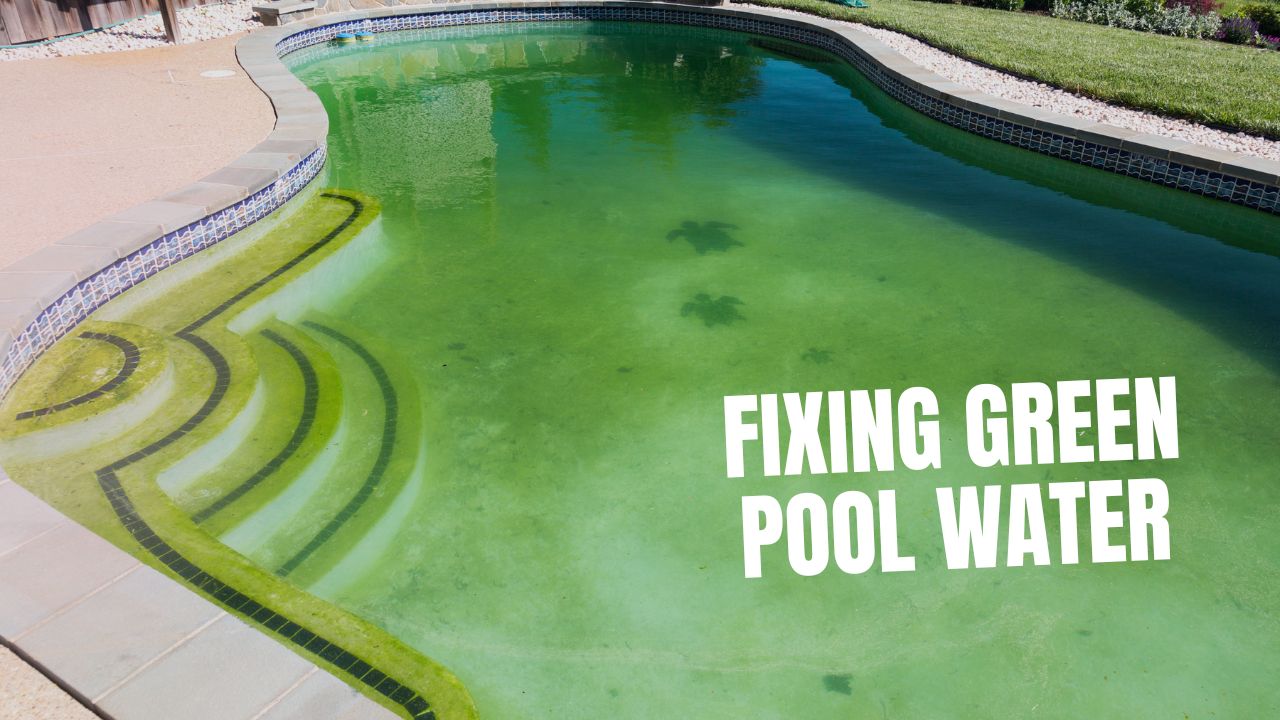SLAM Pool Cleaning is essential to keeping your pool clean, especially when dealing with troublesome algae blooms. With the right method, you can restore your pool’s sparkle. The SLAM method is a step-by-step approach to effectively clean pools plagued by algae and other impurities.
Clean Your Pool with the SLAM Method

The SLAM method involves three key steps: Shock, Level, And Maintain. Here’s how it works:
- Shock: Start by boosting the chlorine levels in your pool significantly higher than the usual amount. This intense dose of chlorine works to destroy algae, bacteria, and other contaminants in the water.
- Level: After shocking the pool, it’s important to keep the chlorine at this high level for a while. This persistence ensures that all the unwanted pollutants are eradicated.
- Maintain: Continue monitoring and adjusting the chlorine levels to keep them steady until the water is clear and free from algae.
Though the SLAM method requires time and effort, it can transform your pool into a clean and safe place to swim when done correctly.
When to Use SLAM Pool Cleaning?
Consider using the SLAM method if you notice any of these signs:
- Algae visible in the pool water.
- Combined Chlorine (CC) levels over 0.5 ppm.
- A drop of 1.0 ppm or more in Free Chlorine (FC) overnight, as shown by an overnight test.
These indicators mean your pool might need the thorough cleaning that the SLAM method provides to restore its clarity.
Key Chemical Terms to Know
Before starting, understand the following pool chemical terms:
- FC (Free Chlorine): This is the main sanitizer that keeps your pool water clean by removing harmful microorganisms.
- CC (Combined Chlorine): This refers to chlorine that has already reacted with impurities.
- CYA (Cyanuric Acid): This acts as a stabilizer, protecting FC from sunlight.
Difference Between Shocking and SLAM Pool Cleaning
Shocking involves adding enough chlorine to reach a high level temporarily. It’s helpful for minor algae issues or if your pool looks cloudy. SLAMing is a more intensive process. If you’re frequently needing to shock your pool or if it has significant algae problems, SLAMing may be necessary. This method requires more time and chlorine, as it involves keeping the chlorine at shock levels for several days.
By following these steps, you can effectively manage and maintain your pool, ensuring it remains a clean and inviting spot for swimming.
How To Perform The SLAM Pool Cleaning

Essential Steps to Shock Your Pool
If you’re preparing to shock your pool, follow these key steps to ensure success:
- Testing Supplies: Get a reliable test kit to accurately measure chlorine levels needed for the SLAM process. Stock up on liquid chlorine to maintain the required levels throughout.
- Time and Dedication: Be prepared to oversee the process, especially in the initial days. Check chlorine levels every 2-3 hours at first, as they can drop quickly. As the pool clears, the checking frequency can be reduced.
- Pump and Filter Check: Ensure that your pump and filter are in top shape. Clean or backwash the filter as necessary. If parts like cartridges or sand need replacement, do it before starting.
- Remove Cleaning Devices: Take out any robotic cleaners before you begin. High chlorine levels can damage these devices.
- Understand CYA: Familiarize yourself with Cyanuric Acid (CYA) and how it interacts with chlorine. Adjust CYA levels to optimize chlorine effectiveness.
- Chlorine Stock: Have plenty of liquid chlorine available. Depending on your pool size and CYA level, you may use several gallons a day.
Step-by-Step Process:
- pH Balance: Adjust the pH to around 7.2 for optimal efficiency.
- CYA Adjustment: Set your CYA to a higher level to sustain shock-level chlorine over several days.
- Chlorine Application: Add chlorine carefully, knowing that one gallon of 10% liquid chlorine raises chlorine by 10ppm. Always round up for safety.
- Manual Brushing: Brush the pool manually. Avoid using robotic cleaners to prevent damage from high chlorine levels.
- Chlorine Monitoring: Regularly check and adjust chlorine levels to maintain the shock level until the water is clear. Start with frequent checks and reduce over time as needed.
Completion Check:
- Water Clarity: Ensure your water looks clear.
- Chlorine Loss Test: Compare free chlorine levels from evening to morning. A drop of less than 1ppm indicates completion.
- Combined Chlorine: Should be under 0.5, ideally close to zero.
Preventing Future SLAMs:
Maintain consistent chlorine levels, particularly if you use a salt system. High pH can hinder chlorine effectiveness, so monitor and adjust as needed. Consider adding an ionizer to reduce algae growth, as copper ions help keep your pool clear without the rapid depletion seen with chlorine alone.
By following these steps, you’ll keep your pool sparkling and reduce the need for frequent SLAM treatments.

